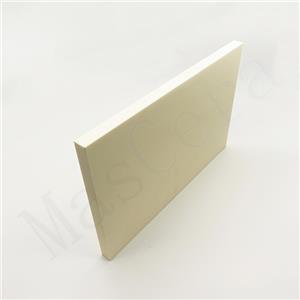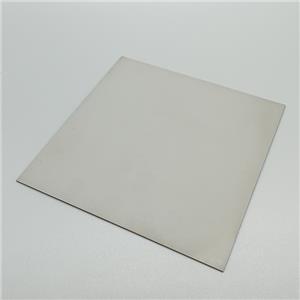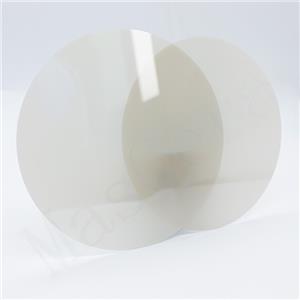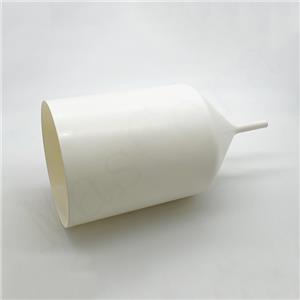Introduction to Advanced Ceramics Dry Pressing Process
The commonly used shaping methods for ceramics include dry pressing, Tape casting, and injection molding. Among them, dry pressing is the most widely applied shaping technique, also known as powder pressing, and it is the primary shaping process for specialty ceramics such as microwave dielectric ceramics and semiconductor ceramic components.
Dry pressing involves placing granulated powder with suitable particle size distribution and good flowability into a metal mold cavity. Pressure is applied by a pressing head, which moves within the mold cavity, transmitting pressure to compact and shape the powder particles, forming a ceramic green body with a specific strength and shape. Essentially, under the influence of external force, the particles come closer together within the mold and are firmly connected through internal friction forces, maintaining a certain shape. This internal friction force acts on a thin layer of binder around the particles as they come closer. As the pressure increases, the green body changes its shape, particles slide against each other, gaps decrease, contact increases gradually, and they become tightly packed. The closer particle arrangement enhances the interaction between colloid molecules and particles, resulting in the green body having mechanical strength.
The main factors affecting dry pressing include:
- Powder properties: particle size, particle size distribution, flowability, moisture content, etc.
- Selection of binders and lubricants.
- Mold design.
- Pressing force, pressing method, pressing speed, and holding time during the pressing process.
In summary, with suitable particle size distribution, correct binder usage, and proper pressing methods, dry pressing can achieve desirable green body density.
Classification of Dry Pressing:
Depending on the movement of the pressing head and mold cavity, dry pressing can be categorized as follows:
1. Uniaxial pressing, where the mold cavity and lower plunger are fixed, and the upper plunger moves.
2. Biaxial pressing, where the mold cavity is fixed, and both upper and lower plungers move. Biaxial pressing can further be divided into simultaneous biaxial pressing and sequential biaxial pressing. Sequential biaxial pressing involves applying pressure on both sides one after the other, allowing for better gas expulsion, longer action time, and more uniform green body density.
3. Floating mold pressing, where the lower plunger is fixed, and both the mold cavity and upper plunger move in sync. When controlled hydraulically, the upper plunger stops moving at a preset pressure.
Characteristics of Dry Pressing:
Advantages of dry pressing:
- Simple process, easy operation, short cycle time, high efficiency, suitable for automated production.
- High green body density, precise dimensions, minimal shrinkage, high mechanical strength, and good electrical performance.
Disadvantages of dry pressing:
- Challenging for large-scale production of bulky green bodies, with significant mold wear, complex machining, and high costs.
- Pressure can only be applied vertically, resulting in uneven pressure distribution, non-uniform density, and uneven shrinkage, which may lead to cracking and delamination. However, modern shaping methods like isostatic pressing have gradually overcome these shortcomings.
Dry pressing is a widely used shaping method in the production of precision ceramics, especially suitable for manufacturing ceramic products with small cross-sectional thicknesses. It is commonly used in the production of ceramic sealing rings, ceramic valve cores, ceramic liners, and ceramic linings, as well as in the fields of microwave dielectric ceramics, mobile phone ceramic covers, and semiconductor ceramic components. Dry pressed green bodies have high density, few internal pores, accurate dimensions, minimal shrinkage, high mechanical strength, require no drying, have regular and uniform shapes, good electrical performance, high efficiency, and are suitable for large-scale continuous production with low costs. With suitable particle size distribution, correct binder usage, and proper pressing methods, dry pressing can also achieve desirable green body density.
XIAMEN MASCERA TECHNOLOGY CO., LTD. is a reputable and reliable supplier specializing in manufacturing and sales of technical ceramic parts. We provide custom production and high precision machining for a wide series of high performance ceramic materials including alumina ceramic, zirconia ceramic, silicon nitride, silicon carbide, boron nitride, aluminum nitride and machinable glass ceramic. Currently, our ceramic parts can be found in many industries like mechanical, chemical, medical, semiconductor, vehicle, electronic, metallurgy etc. Our mission is to provide the best quality ceramic parts for global users and it is a big pleasure to see our ceramic parts work efficiently in customers' specific applications. We can cooperate on both prototype and mass production, welcome to contact us if you have demands.




